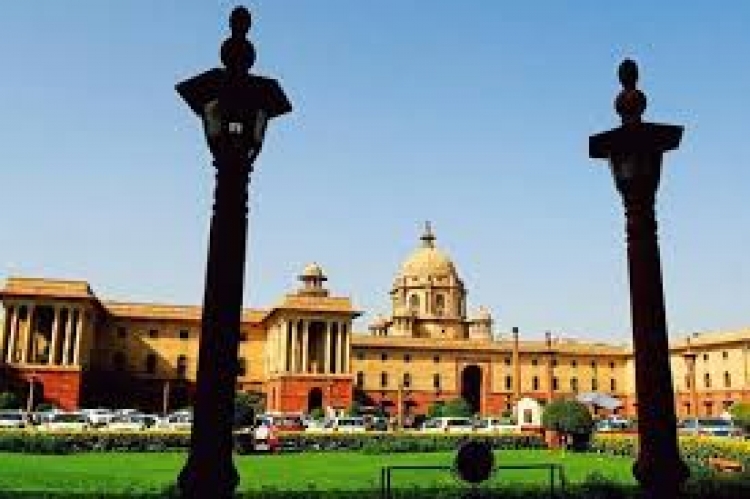
The Rusted Steel Frame of India: Navigating the Structure and Branches
25 Jun 2016 0 comment(s) Research Essays
(This essay was first published on blog-site on 25 June 2016)
Kennedy School Review- 2011, the annual magazine/journal of Harvard Kennedy School published an essay by me on the issue of reforming the organized cadre-based higher civil services in India (what we in India popularly known as IAS, IPS and others). Writing and finalizing the essay was an experience in itself, as what I initially wrote was well beyond the word limit, and I had to go through around 10-15 iterations before it was finalized. My editor was a merciless guy, not ready to listen to me! In the end, though the essay was much curtailed, I was happy with the result. It was a short and crisp piece, and in the process I learned too.
In my previous blogs, I have repeatedly pointed out that the institutional and governance reforms are one of the crucial steps which our country needs the most at this juncture to move to the next level of growth path. In that sense, civil services reforms are now the 'binding constraint' shackling the growth of our country (and in particular my state - Bihar).
In these blog-essays on reforming the higher civil services in India, I propose to follow what I have written in 2011 for Kennedy School Review, with suitable addition, expansion and revision. This first part basically explains the structure and constitution of the services and its various branches, including the selection process.
I must point out that the original essay was written for US/non-Indian audience, and therefore, things were explained starting from the basics. In that sense, to many of my Indian readers in general, and to my civil servant colleagues in particular, this part of the essay may appear somewhat familiar. Nevertheless, I would like them to go through it patiently (this part is now almost 4500 words long), as I think, it contains useful insights. WordPress statistics tells me that a significant proportion of my blog readers are from outside India, and therefore, I am maintaining the basic explanations.
It is difficult to structure the essays in advance, but tentatively, I would be covering the following issues in this and subsequent essay, one part per essay:
A. The Structure and 'Services'
B. Induction and Recruitment
C. Meritocracy or Mediocracy?
D. 'Services' - Roles, Functions and Reorganization
So, Here we go....
1. Getting into World’s Best Universities is like a Cake-Walk in comparison…
Have we ever wondered as to what is the most difficult and most competitive selection process in the world for getting a job or a seat in a university? It is India's Civil Services Examination which recruits permanent higher civil servants for different branches of the federal as well as state governments' bureaucracy. One of my professors at Harvard University has rightly observed that the Indian civil service is full of officers who have passed an entrance examination and selection process that makes getting into Harvard look like a walk in the park[1].
Though I think that the comparison cannot strictly be made. There are various factors which make it like comparing apple to oranges. First, comparing a competitive examination for job with that of a selection for admission to a university degree in not in order. Next, socio-cultural and economic situation in USA and India are completely different. Clearly, there is a huge resources and opportunity deficit in India, which has a bearing on educational and job scenario. Further, we in India hardly make any ‘self-selection’ while taking competitive examination, and it is quite common to find large number of non-serious candidates appearing in UPSC and other competitive job examinations, often without much preparation, which obviously is not the case in USA.
Furthermore, this tendency is more pronounced in cow-belt in general, and in Bihar in particular, where huge number of young spent their precious productive years appearing in competitive examination without much preparation or thought. I sometime think that it is a favorite pass-time of Bihari’s graduate! On a serious note, lack of industrial and commercial development and progressive decline of agriculture resulting into dearth of employment opportunities, coupled with socio-cultural preference for government job (which in our country is secure, low risk and mostly keeps paying without any consideration to performance) is a driving factor towards this mad-rush for taking competitive examination to find any type of government job.
Consider this: The latest figures (available at the time of original essay in 2011) shows that every year around 380-400 thousand young Indians compete through a fair, open, meritocratic three stage intensely competitive examination process for around 600-800 vacancies in higher bureaucracy - making a selection ratio of around 1 in 600 candidates[2]! The examination has rightly been called not a 'selection' but a 'rejection' process! In India, higher civil service is one the most popular career options for some of the brightest young Indians graduating from universities - with degrees in management, engineering, law, science, social science, liberal arts, medicine and what not, with widely varying social, economic and regional background[3]. If looked purely in terms of monetary rewards, a career in civil service would not compete very favorably with other careers in business management, consulting, software, technology or medicine. Despite this, it attracts some of the best talents in India from all sections of the society mainly because of highly rich job content and diversity of responsibilities, social recognition and prestige associated with being in civil services, and an opportunity to work in areas of development, provision of public goods and general administration of the country. In fact, a person joining the career bureaucracy can aspire to reach the highest level of government machinery just below Ministers (political executives, who are elected members of Parliament) as, contrary to USA, political discretionary appointment of higher executives by Ministers does not exist in India.
The recruitment for civil services are managed by an independent constitutional body called 'Union Public Service Commission' which conducts annual examination and personality tests for selecting suitable young candidates. Any Indian with an undergraduate degree in any academic discipline, between the ages of 21 to 30 years can appear for the first stage called the 'preliminary' examination, at the most 4 times[4]. If selected, she can then appear in the 'mains' examination and on further being successful; she is called for an interview and personality test. The final selection is made on the basis of performance in mains examination and personality test and an all India merit list is finalized.
Since I wrote the above paragraph in 2011, the selection process has undergone some changes, the ‘preliminary’ examination is replaced by what is now called ‘CSAT – civil services aptitude test’, but essentially, the nature, content and difficulty of the examination remains the same. Further, the number of candidates appearing for the examination has continuously been increasing year after year despite claims from various quarters that the attraction of higher civil services is waning with the overall growth of the economy and increasing opportunities. There might be some truth in this claim too - and we need deeper analysis of this - especially with respect to the socio-economic strata of the candidates taking up the examination and also examining the variations in regional, rural-urban and educational background and their time series movements
Successful candidates are allocated to different 'branches' of the service on the basis of their rank in merit list and their choices. Every year, successful candidates receive wide public attention, with their interviews coming in national, regional and local print and electronic media, they being invited for talks and for providing guidance to the aspirants etc. The wide popularity of civil services has helped development of large number of coaching/guidance institutions all over India, and there are localities in metros like Delhi which are buzzing with students living in small rented hostel-like cramped private accommodations preparing for intense and exacting selection process. Alas! only a small fraction of them ultimately get successful and for others, the failure (in many cases, after investing 3-4 precious years of their youth) often haunts them for quite long, though they ultimately have to settled for alternative careers.
I would like to further highlight the piquant 'uncertainty' and 'risk' characteristics of civil services examination, which makes it a very interesting situation to examine from risk analytics. The uncertainly involved in selection are very high – as I have already pointed out – only 1 in 1000 or so candidate gets selected through the grueling process, and one iteration of the process takes one year. General candidates are allowed 4 chances, up to the age of 30 years. I have known large number of my friends and others who have invested 4 precious and most productive years of their lives preparing for civil services examination ultimately to be unsuccessful. Some of them got through other competitive examination and have been redeemed to that extent. Some, after failures opted for other types of private sector jobs, and some became entrepreneur and businessmen. However, some of them are still not well settled and in that sense have paid heavily by taking this risk.
But the main point I want to make here is something different. It is about the contrast in risk before and after selection. Take this - I have not heard of any civil servant who has been fired for non-performance! Once you are selected, your career is almost risk fee – whether you work or not, whatever be your performance, you will keep on getting promotions (mostly) on time, keep moving up in the hierarchy and your salary will keep getting higher and higher with each promotion. Ok… I may be exaggerating a bit. But more or less, the situation is not very different from what I have described. We often hear that donkeys and horses are treated the same in government in India and that's the real point. The subsequent parts of the essay will talk about this issue, and therefore, we stop here with my concluding observation on risk in civil services examination:
I see a very interesting application of economic concept of risk-aversion and inter-temporal preference for risk in this situation and a deep insight into why so many take that risk: take very high risk for 3-4 years in the beginning to get an almost-risk-free life for subsequent 30-35 years.
2. Governance, Bureaucracies and Civil Services in India
Governments have been one of the most important institutions of our society ever since the human civilizations organized themselves in recognizable and manageable groups. In today’s era, the role and responsibilities of government is immense for organizing and managing a society on mutually agreed principles of humanity and a civilized society bound by principle of freedom, justice and liberty and independence to individual. With such responsibilities, national and sub-national (regional) governments in different countries are often gigantic organizations, largest employer, and are usually organized into different ministries, line departments, and executive agencies carrying out the myriad functions of national administration and security, maintenance of law and order, raising of revenues and provisioning of public goods with varying level of involvement in economic and social development efforts and in facilitating and regulating the markets, industry, trade and commerce. Whether the scope for state activities are large or small, which depend on historical, social, cultural, economic and political factors, they need public institutions, administrative structure and resources to carry out even the minimal function of governance.
Typically the government institutions are bureaucratic, which are often characterized as ill suited to cope with its task and purposes - as they are too big, powerful, hierarchical, rule-bound, indifferent to results, inefficient, lazy, incompetent, wasteful, inflexible, unaccountable[5] and what not! However, this perception often fails to see the fundamental difference between a public and private organization - the most crucial of them perhaps being the accountability to public at large and public service nature of administration. Further, bureaucracies have been reinventing themselves, and despite such strong criticism, they have not only survived but also have grown and evolved in many respects[6]. Without further going into issues like debureaucratization, postbureaucratic forms, New Public Management etc., it may in short be noted that in past two decade or so, there has been perceptible change in the way government departments and bureaucracy operates and there has been improvement in some crucial areas.
'Steel Frame of India' was the phrase late Jawaharlal Nehru used to describe the organized civil service of India. Though it was a British legacy and Nehru was skeptical of it in the beginning, he came to appreciate that a highly qualified, professional and meritocratic civil service institution would, perhaps, be an important factor in making a successful transition of India from a backward nation to a prosperous country. As it turned out, though the transition may not yet has been achieved after more than 65 years of independence, the civil services, as a professionally managed cadre of bureaucrats has evolved as one of the pivotal institution of the democratic India. It has even been identified as one of the important factors behind the deepening of democracy and consolidation of the idea of India[7]. In the parliamentary democracy of India, where the political executive come and go through regular general elections, the executive civil service is permanent providing much needed continuity, knowledge pool, expertise and professionalism to better manage a vast and diverse country. Though responsible and answerable to political executive, the administrative and institutional structure of civil service is not dependent on the whims and fancies of the political class, thus providing a fine example of check and balances, together with independent judiciary and free press.
Indian civil servants are not only administrators of India - they run district/local administration, collect revenue and taxes, maintain internal security & law and order, run school education and public healthcare facilities, execute developmental programs, manage foreign relations, regulate the markets and other economic institutions, even run railway and broadcasting corporation; but are also policy makers - economic, social and developmental - manning almost all the higher level posts in federal and state government ministries. In a sense, they are virtually present everywhere in national polity and administration. Their roles and responsibilities get augmented in the developing country setting of India.
Governments (Union and States) in India are the largest organized sector employer, employing as much as 10.5 million people directly (excluding the armed forces), most of whom are permanent. On the whole, federal government employs around 3.7 million persons, out of which around 1.5 million are with railways and 0.4 million with posts alone. All 29 states governments together employs another 6.8 million persons. Out of 10.5 million government employees with Central and State government, the higher managerial level (which may be equated with what in India is called Group A officers) forms only around 1% (around 100,000) and out of this, around 1/3 constitutes civil services (with which we are concerned here). The remaining 2/3 constitutes what generally is called managerial/professional cadre of 'technical services' like medical doctors, scientists, engineers in roads, buildings, public health, scientific and research and infrastructural departments, etc.
To be more specific, the civil service institution is organized on hierarchical lines with well-defined structure, process, roles and responsibilities and methods. In governmental structure, four broad hierarchies of employees are defined. They are called (quite unimaginatively) group A, B, C and D level employees, with D being the lowest. Within each group, there are again hierarchies and levels. Generally group A and B category posts are managerial level positions, and Group C and D categories provide the crucial executive and clerical support. However, recently, government of India has decided to abolish the lowest group D (in fact this group has been merged with group C) and has also decided that it would henceforth be employing only people with at least high school education[8].
In terms of numbers, as we have seen above, group A forms around 1% of total employees. Further, around 10% forms group B, around 55-60% are in group C and remaining 30-34% are in group D[9]. Recruitment of group B (and some group C) federal government employees is done by another national agency called ‘Staff Selection Commission' through open competitive examination process for different ministries/department. In case of state government civil services, all the states have their own ‘Public Service Commissions’ which recruits civil servants for group B and C, mostly through open competitive examinations. Recruitment of group D (as well as group C) employees is generally decentralized to respective departments/executive agencies. Direct recruitment of young people through open competition examinations is made at entry level of each group. In addition, at each level, some proportion of recruitment is made from amongst promotion of employees belonging to immediately lower level on the basis of seniority, which varies anywhere from 25% to 75%. The idea behind is to have a mix of not only young people but also experienced people at all levels in the hierarchy. This structure coupled with permanent employment and seniority based promotions also ensures proper career progression and promotional opportunities.
3. Branches of Senior Civil 'Services' : Preferred and Leftovers
Due to limitation of space and the importance of the highest civil services, we would be analyzing only the highest level in some detail. There are many 'branches' of the higher civil services, which should not be confused with Department, as they often transcend them. Branches, called 'services', are organized cadre of civil servants (officers, not agencies) grouped largely on the basis of broad functional areas. Thus, we have services named Indian Administrative Service (IAS), Indian Police Service (IPS), Indian Revenue Service (IRS), etc, members of each of which generally spend most of their career in the respective functional areas in different line departments and executive agencies as well as in policy making ministries (except for IAS – who are considered generalist and span a wide functional domain). Nevertheless, they can be (and indeed do get) assigned to post/responsibility in many other functional areas. Table below gives a snapshot of the various services and their broad functions. The list is not exhaustive, as in fact, there are around 25 different 'services' totaling to around 40,000 officers, some of them being very small, created for some specialized functional requirements. IAS is the most prominent branch, being in charge of virtually all the state government functions and widely present at federal government ministries. IAS, IPS and IFoS are assigned to various state governments and work in state level line departments in areas assigned to states, other services being managed by federal government and performing functions assigned to federal government in accordance with division of power enshrined in Constitution of India.
Main Branches of the Permanent Executive Civil Services in India
| Branch/Services | Apprx. Nos. | Main functions |
| Indian Administrative Service (IAS) | 6000 | The most important and most widely known service. District and Local administration, State level general and developmental administration - please note that in India, most of the administrative and developmental functions are performed by states, and thus IAS officers work at leadership roles in vast array of functional domains. They also work at senior position in policies, regulations and management at Central government organizations. |
| Indian Revenue Service (IRS) | 8000 | Revenue collection of federal government - all taxes, customs duties etc. further sub-divided into two branch - Income Tax, and Customs & Excise (IRS-IT) and (IRS-CE), with no movement across these two branches. (Note that IRS do not man state tax department (VAT or commercial taxes)). Further, the huge size of this service compare to others is a distinctive feature. With the impending introduction of GST, there are serious questions about the role of IRS-CE in the overall scheme of things (this issue will be taken up separately in subsequent parts of this essay) |
| Indian Police Service (IPS) | 5000 | Policing, Law and Order management, internal security, public safety, public order and peace, crime, investigation and intelligence, supervision of para-military forces. |
| Indian Forest Service (IFoS)* | 2800 | Environment, forest and management of flora and fauna, mainly at state and district governments |
| Indian Railways Services : (IRTS), (IRPS), (IRAS) | 2800 | Management of civil functions (as opposed to technical/engineering ) of the railways operations; three branch services - Traffic, Personnel and Accounts called IRTS, IRPS, and IRAS |
| Accounts Services: (ICAS), (IDAS) (IPTAFS) | 1200 | Accounts, Treasury and financial management of Federal government; branches - Indian Civil Accounts Service, Indian Defense Accounts Service, and Indian Post and Telegraph Accounts and Finance Service. |
| Indian Audit and Accounts Service (IAAS) | 800 | Constitutional independent auditor of the government - central as well as states, also management of accounts of state governments |
| Indian Foreign Service (IFS) | 700 | Diplomatic and foreign relations, in-charge of foreign ministry, embassies, consulates etc., and responsible for protecting and advancing India's interest in the world |
| Indian Postal Service (IPoS) | 600 | In charge of India postal organization |
| Indian Information Service (IIS) | 500 | Looking after Information and Broadcasting ministry, in-charge of Doordarshan, Air India and similar other organization |
| Indian Trade Service | 400 | National and International trade and commerce – regulation and promotion |
| Indian Economic Service* | 700 | Economic management, economic analysis and policy, present in various federal ministries and economic adviser |
| Indian Statistical Service* | 600 | Data collection, analysis and dissemination. Mainly in central statistical organizations |
| Indian Defense Estate Services | <500 | Managing defense estate and properties |
| Central Secretariat Service Gp B | <1000 | Group B service running all the central ministries, mostly below IAS |
| Delhi and Andaman Nicobar Civil Services Gr B | <400 | Group B services akin to IAS for Union territories, including Delhi |
| Delhi and Andaman Nicobar Police Service Gr B | <400 | Group B service akin to IPS for Union territories, including Delhi |
Source: Compiled from Information available at Department of Personnel and Training, Government of India website, www.persmin.nic.in
*Strictly speaking, these services should not be included in this list, because there is a separate specialized examination for selection into these (though the examination is conducted by UPSC only). However, they are still included in the organized Group A civil service by Government.
We are also leaving out a large section of other 'technical services' which are again in itself a large group of different 'technical' (mainly engineering) branches like Indian Railway Engineering Service, Indian Telecom Service etc. They manage most of the technical function of the government, but are supervised on top by mostly IAS officers, which is again a contentious issue. Traditionally and officially, they are not considered as a part of 'Civil Services'.
Distinction may also be made of what is called "All India Service" (comprising of IAS, IPS and IFoS) and "Central Services" comprising all other branches. The basic feature of this distinction being that All India services work mostly with state government (though also with Central government) whereas Central Services officers work exclusively (though there may be exception) with central government organizations/ministry. I am not entering into the merits or demerits of such a distinction, which will be take up later on.
These separate branches act as separate 'cadre' for the purpose of service management like seniority, career progression, promotions, performance management, postings and rotation etc, though there is also an underlying structure to maintain parity among services in such matters. Promotions are mainly based on seniority, with the condition that an officer has been performing above a certain minimum benchmark - judged on the basis of her annual performance report prepared by her superior, and has not been found involved in corrupt practices or unfit due to other reasons. There are equivalent 'grades' in the hierarchy across different services with stipulation of minimum eligibility in terms of number of years of service rendered to be eligible for promotion. However, the 'designation' varies depending upon the organization, ministry and the level of government (federal or state) a bureaucrat is working for. These hierarchies of career progression are functional with different levels of administrative responsibilities and it is possible to identify these with Henry Mintzberg’s famous Five Component Model[10] having levels of Junior, Middle and Higher Management levels along with Strategic Apex.
The above list is not exhaustive, and there are few more services with small cadre, which have been created by Government of India at different times. Further, the number of officers is only approximate, and the reality may be slightly different, specially in case of smaller services for which I have used < sign. The last three services in the table are Group B services, who generally are junior to IAS, though are recruited through the same examination.
As can be seen, except for few well know services, there are other services which have been created for specialized purpose and have been confined to a ministry. These services are rarely known, not much preferred by the candidates appearing in the examination (IAS being the most preferred choice, followed by IFS, IPS and now IRS too, generally in that order). In a sense, all those candidates being allocated to less preferred services face a vastly different job prospects, responsibilities and future outlook, and it is an important issues which I will discuss in detail later.
Nevertheless, I might point out the hegemonic position of IAS vis-a-vis other services, and the resulting widespread discontent in other services due to this. IAS being generalist service, occupying top level posts in most domains are inherently different from other services, which are specialsed in nature. However, since all of them are recruited through the same examination process where a marginal difference of few marks has played in the allocation of different branches, and where all branches are in principal have same rank and pay, this real difference in career profile of IAS and non-IAS is all the more resented. It is an important issue and I will be saying more on it later
References
[1] Pritchett Lant (2009): Is India a Flailing State? Detours on the Four Lane Highway to Modernization; Harvard Kennedy School Faculty Research Working Paper Series, RWP09-013, May 2009, pg 3
[2] Union Public Service Commission (2010): 60th (2009-10) Annual Report; UPSC, Government of India, www.upsc.gov.in
[3] Barik R R (2004): Social Background of Civil Service, Economic and Political Weekly, Mumbai, India; Vol 39, No. 7, February 14, 2004
[4] There is positive discrimination for socially disadvantaged sections of society in terms of higher number of attempts and higher cut-off age limit as well as certain quota of seats reserved for them.
[5] Oslen Johan (2008): The Ups and Downs of Bureaucratic Organization; The Annual Review of Political Science, 2008.11:13-37,
[6] Simon Herbert (1997): Administrative Behavior - A Study of Decision Making Process in Administrative Organizations, 4th Ed, The Free Press, New York, Ch. 1,2 and Comments on Ch.1, 2
[7] Guha Ramchandra (2007): Indian After Gandhi - A History of World's Largest Democracy, Harper Perennial, New York, p755
[8] Government of India (2008): Report of the VIth Central Pay Commission, Government of India, New Delhi.
The decision to recruit people with only high school (10th grade) education (and outsource jobs which require lesser or no education) has been protested and criticized, on the grounds of it being iniquitous and elitist, as it leaves the less educated to the vagaries of unorganized sector and private sector employment, which is widely (and correctly) seen as exploitative. The argument has some merit as access to universal school education in India is still far away - and children have widely differing opportunity for access and quality of schooling which is closely correlated with their socio-economic status.
[9] Based on Census of Central Government Employees (2003), Ministry of Labor, Government of India and other documents; available on www.labour.nic.in
[10] Henery Mintzberg (1979): The Structuring of Organizations, Prentice Hall, Engelwood Cliffs, N.J. pp 215-297 and “Organization Design: Fashion of Fit?”, Harvard Business Review 59, Jan-Feb 1981,
(Word Count: Approx 4500)


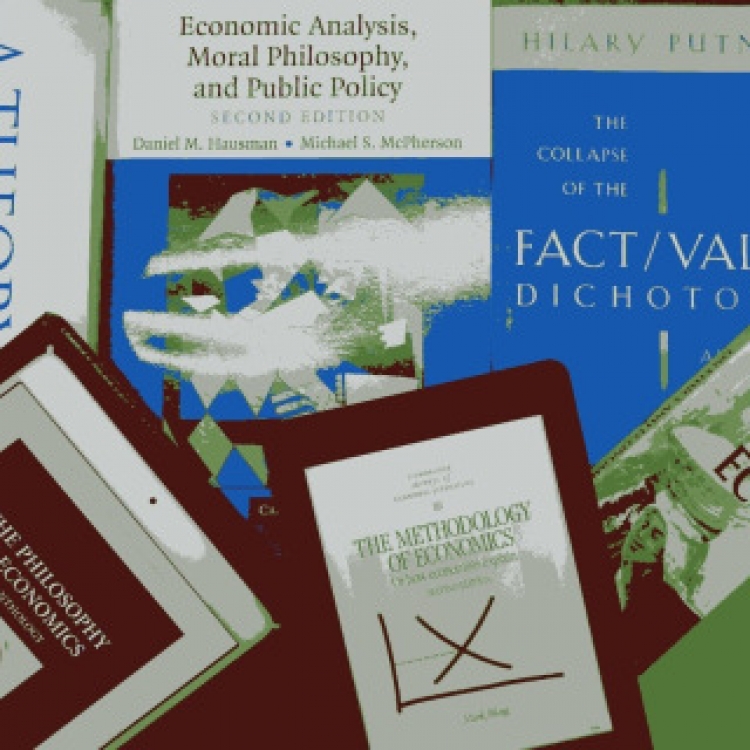

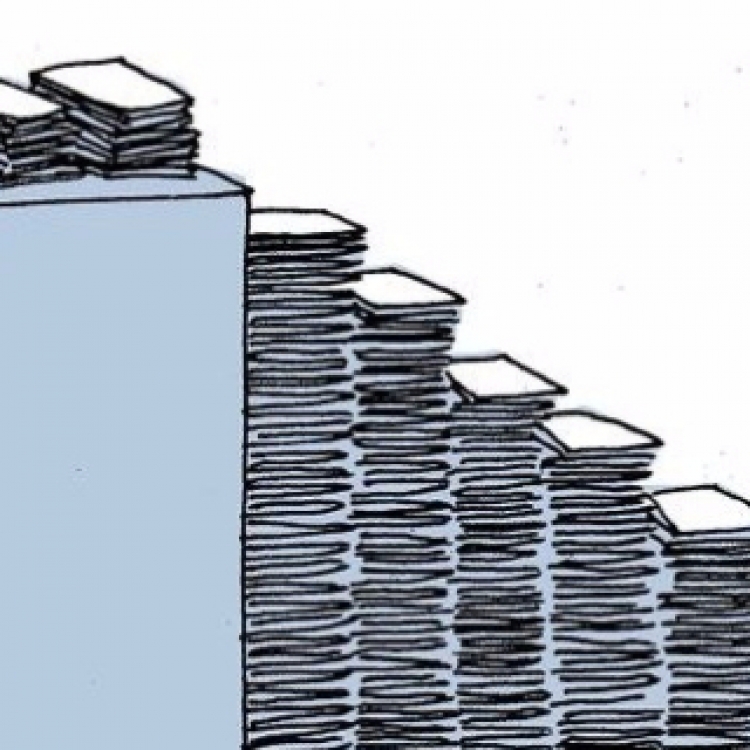

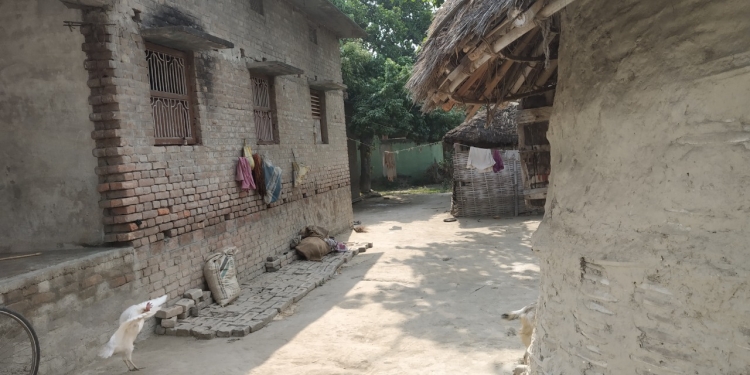
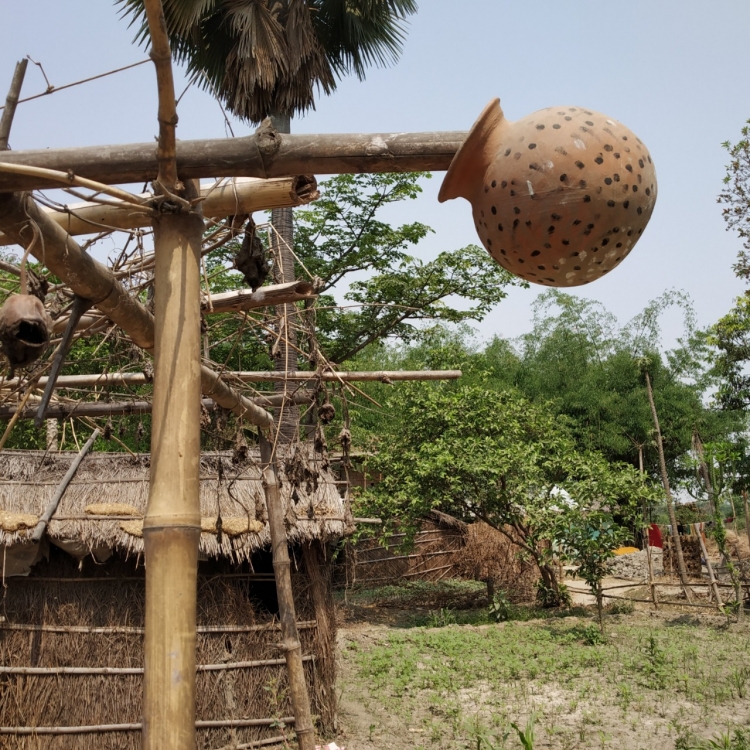
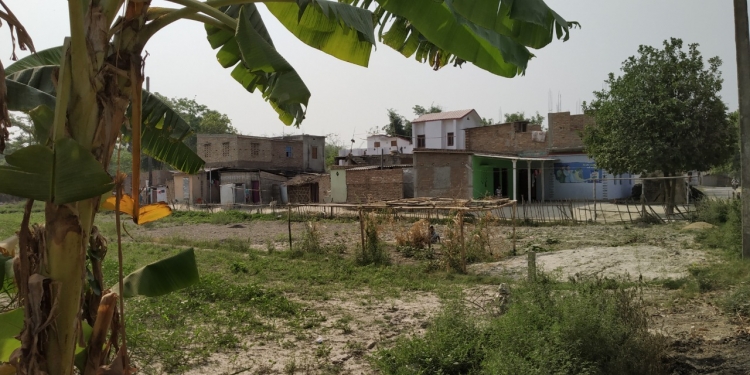

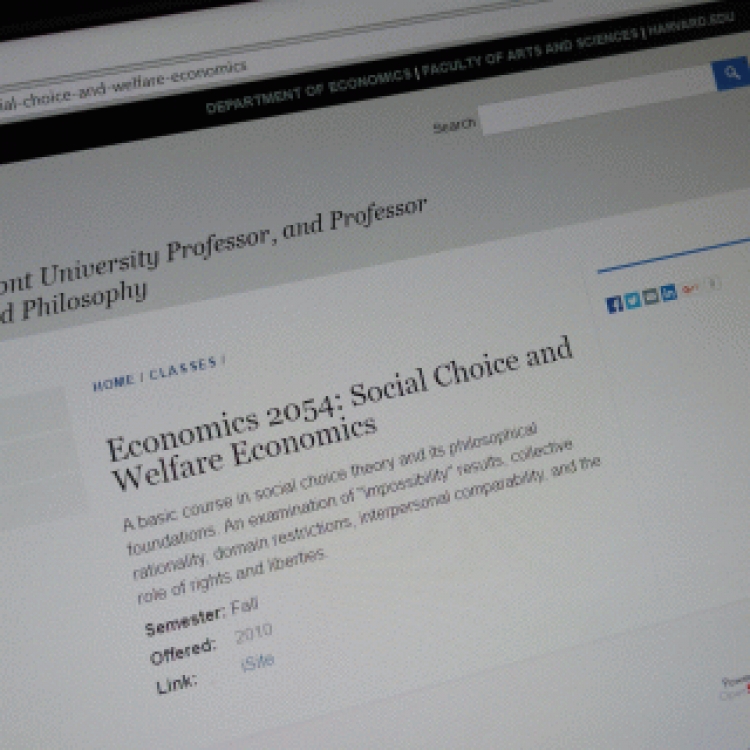
Comments
0 comment(s)